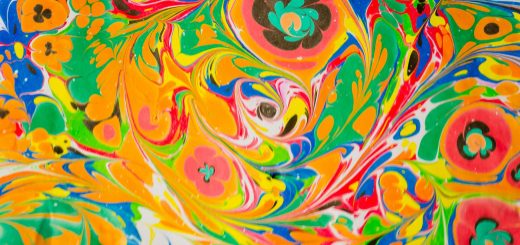How Art Serves Religion: A Deep Dive Into Spiritual Expression

Before diving in, please note: This post is for informational purposes only. If you’d like to know more about how we approach topics, feel free to check out our friendly Disclaimer Page.
Hey there, amazing readers! 🖐️ Just a quick note: yes, we know there are a lot of ads here. Trust us, we get it—it’s not the prettiest look, but they help us keep this blog alive and kicking. Those pesky little ads cover the costs of all the behind-the-scenes magic, from hosting and tech stuff to creating content we hope you’ll love.
We’re committed to delivering quality posts, and your support (even just sticking around despite the ads) means everything to us. So, bear with us, and thanks for helping us keep the good vibes rolling. Now, on to the fun stuff! 😉
TRANSLATE BUTTON AT THE END OF THE ARTICLE
Art and religion have shared an intimate bond throughout human history, with one often inspiring the other.
Art serves religion by offering visual, emotional, and symbolic representations of spiritual beliefs, bridging the gap between the divine and the human experience.
Whether it is a sacred sculpture, a painted depiction of a religious story, or the intricate architecture of a temple, art plays an integral role in shaping and expressing faith.
Let us explore how art serves religion and its profound impact on spiritual life.
The Relationship Between Art and Religion
Art and religion are both forms of expression, each exploring questions about existence, purpose, and the divine.
While religion provides a framework of beliefs and practices, art communicates these beliefs through creative mediums.
Shared Goals of Art and Religion:
Inspiring Devotion: Both seek to uplift and connect people with something greater than themselves.
Creating Community: Art and religious practices bring individuals together through shared experiences.
Exploring the Sacred: Art gives form to the abstract, making intangible spiritual concepts tangible.
How Art Serves Religion
Art has been a cornerstone of religious expression, serving practical, educational, and emotional purposes within spiritual traditions.
1. Enhancing Worship Spaces
Religious buildings like churches, mosques, temples, and synagogues are often adorned with artistic elements that reflect the sacred.
Examples include stained glass windows in cathedrals, Islamic calligraphy in mosques, and Buddhist mandalas in temples.
These designs create a sense of awe, reverence, and focus during worship.
2. Telling Sacred Stories
Before literacy became widespread, art served as a way to convey religious narratives to followers.
Frescoes, murals, sculptures, and carvings illustrated stories from sacred texts like the Bible, Quran, and Bhagavad Gita.
Examples include Michelangelo’s Sistine Chapel ceiling or the bas-reliefs on Angkor Wat depicting Hindu epics.
3. Symbolizing Faith and Beliefs
Art uses symbols to convey religious ideas.
- The cross in Christianity symbolizes sacrifice and redemption.
The lotus flower in Buddhism and Hinduism represents purity and spiritual awakening.
Islamic art uses geometric patterns to reflect the infinite nature of God.
4. Facilitating Meditation and Reflection
Art often serves as a focal point for spiritual contemplation and meditation.
Icons, mandalas, and statues encourage mindfulness and provide a visual aid for prayer.
For instance, Tibetan monks create intricate sand mandalas as a meditative practice and symbol of impermanence.
5. Expressing the Divine Through Creativity
Many religions view artistic creativity as a reflection of divine inspiration.
In this sense, creating art becomes an act of worship, as seen in the chanting of hymns, crafting of idols, or painting of sacred imagery.
Art in Different Religious Traditions
Art manifests differently across religious traditions, shaped by their unique beliefs and practices:
Christianity
Art has played a significant role in Christianity, from the early catacombs to grand cathedrals.
Paintings and sculptures often depict Jesus, Mary, saints, and biblical events.
The Renaissance period saw a flourishing of Christian art, with artists like Leonardo da Vinci and Raphael creating masterpieces.
Islam
Islamic art avoids figurative depictions in favor of geometric patterns, calligraphy, and arabesques, reflecting the beauty and unity of God.
Mosques are adorned with intricate tilework, domes, and minarets, creating awe-inspiring spaces.
Hinduism
Hindu art is rich with depictions of deities, each with specific attributes and symbols.
Temples are designed as microcosms of the universe, with detailed carvings and sculptures representing mythological stories.
Buddhism
Buddhist art often focuses on the life and teachings of the Buddha, depicted through statues, stupas, and murals.
Mandalas, created for meditation, are a central artistic element in Tibetan Buddhism.
Judaism
Jewish art emphasizes symbols like the menorah, Star of David, and Torah scrolls.
Synagogues feature ornate designs and stained glass, often showcasing biblical themes.
The Emotional Impact of Religious Art
Art evokes emotions that connect worshippers with their faith on a deeper level.
It inspires awe, peace, hope, and devotion, making the spiritual experience more profound.
Awe: The grandeur of religious art can instill a sense of the divine’s magnificence.
Comfort: Depictions of compassionate deities or serene landscapes can provide solace during times of difficulty.
Unity: Shared artistic traditions strengthen community bonds within a faith.
Challenges in the Intersection of Art and Religion
While art serves religion in many ways, it is not without its complexities:
Iconoclasm: Some religious traditions oppose the use of images, fearing idolatry.
For example, certain Protestant sects and Islamic movements reject figurative depictions.
Cultural Sensitivities: Religious art must navigate cultural diversity and avoid misrepresentation.
Modern Interpretations: Contemporary artists often reinterpret religious themes, which can spark debate within faith communities.
Why Religious Art Endures
Despite challenges, the relationship between art and religion remains enduring.
Religious art continues to:
Foster connections between the sacred and everyday life.
Inspire new generations of believers and artists.
Preserve cultural heritage and traditions.
Conclusion
Art serves religion by bringing spiritual beliefs to life in ways that engage the senses, evoke emotions, and inspire devotion.
From ancient temples to contemporary masterpieces, art continues to enrich and deepen our understanding of the sacred.
So next time you encounter a piece of religious art, take a moment to reflect—it might just connect you with something greater.

The Enlightenment Journey is a remarkable collection of writings authored by a distinguished group of experts in the fields of spirituality, new age, and esoteric knowledge.
This anthology features a diverse assembly of well-experienced authors who bring their profound insights and credible perspectives to the forefront.
Each contributor possesses a wealth of knowledge and wisdom, making them authorities in their respective domains.
Together, they offer readers a transformative journey into the realms of spiritual growth, self-discovery, and esoteric enlightenment.
The Enlightenment Journey is a testament to the collective expertise of these luminaries, providing readers with a rich tapestry of ideas and information to illuminate their spiritual path.
Our Diverse Expertise 🌟
While our primary focus is on spirituality and esotericism, we are equally passionate about exploring a wide range of other topics and niches 🌍📚. Our experienced team is dedicated to delivering high-quality, informative content across various subjects ✨.
To ensure we provide the most accurate and valuable insights, we collaborate with trusted experts in their respective domains 🧑🏫👩🏫. This allows us to offer well-rounded perspectives and knowledge to our readers.
Our blog originally focused on spirituality and metaphysics, but we’ve since expanded to cover a wide range of niches. Don’t worry—we continue to publish a lot of articles on spirituality! Frequently visit our blog to explore our diverse content and stay tuned for more insightful reads.





